Vitória F.C.
Vitória Futebol Clube is a Portuguese sports club from the city of Setúbal. Popularly known as Vitória de Setúbal (pronounced [viˈtɔɾiɐ dɨ sɨˈtubaɫ]), the club was born under the original name Sport Victoria from the ashes of the small Bonfim Foot-Ball Club.
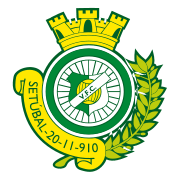 | ||||
| Full name | Vitória Futebol Clube[1] | |||
|---|---|---|---|---|
| Founded | 20 November 1910 | |||
| Ground | Estádio do Bonfim | |||
| Capacity | 15,497 | |||
| Chairman | Vítor Hugo Valente | |||
| Manager | Lito Vidigal | |||
| League | Primeira Liga | |||
| 2019–20 | Primeira Liga, 16th of 18 | |||
| Website | Club website | |||
|
| ||||
When it comes to main achievements in Portugal, Vitória de Setúbal have won six trophies: three Taça de Portugal and one Taça da Liga. Internationally, Vitória have won a Small Club World Cup and an Iberian Cup. Historically, it is one of the most decorated clubs in the country, apart from the Big Three.
History
Origins (1903-1910)
At the beginning of the 20th century, a new sport from England, football, had arrived in the city of Setúbal. It soon started to gain prominence, largely due to the recent games that young people played amongst themselves The wealthier people, played in the fields of Bonfim with leather balls and an early form of football shoes, while others, mostly working class, played in the city, usually barefoot and with homemade balls. In 1905, a group of schoolboys who came from Casa Pia and went to study at the University, made the sport even more popular, and in that period the first clubs in the city were founded, including: Grupo Académico, União Futebol Avenida, Ginásio Setubalense , Bonfim Futebol Clube, Sport Clube Académico, among others. However, out of all of the football clubs in the city, one stood out more than the others, Setubalense Sporting Clube (who wore shirts with a vertical green and white design) . Setubalense Sporting Clube were a multisport club participating in several sports, both on land and at sea, such as: duck hunting, fishing, canoe races on the River Sado, rowing, track and field, bicycle races, gymnastics and also football, where they became one of the most important names in sport that the city participated in. [2]
Foundation and early years (1910-1920)
On 10 November 1910, the growing tensions between the members of Bonfim Futebol Clube (one of the most popular clubs in Setúbal) led Joaquim Venâncio, Henrique Santos and Manuel Gregório to leave the club and decide to found a new club. Joaquim Venâncio encouraged his colleagues by declaring Victory will be ours! He then named the club Sport Vitória. Shortly thereafter, on 20 November, new members joined the group, including Guilherme da Silveira, José Preto Chagas, Manuel Reimão and Gabriel Rouillé, after this Sport Vitória was founded. With the founding of Sport Vitória, they adopted a kit with white shorts and a white shirt with collar and red pocket , many clubs in Setúbal (including Setubalense Sporting Clube) disbanded shortly thereafter, and many of their members joined Sport Vitória on a large scale. People such as: Matos Diniz, Duarte Catalão, Ernesto Viegas, António Ledo, Eurico Costa, Joaquim Gomes, Júlio Araújo, Mário Ledo, among other footballers. On 5 May 1911, the first club meeting took place, and in that assembly, Joaquim Correia da Costa (Portuguese journalist and writer), suggested that the club change their name to Vitória Futebol Clube. In this historic first meeting, the future of Vitória was discussed, which consisted of the peoples roles at the club:
President - Manuel dos Santos Barreira;
Vice President - Mário Ledo;
1st Secretary - Manuel Reimão;
2nd Secretary - António Ledo;
Treasurer - Joaquim Venâncio;
Club Captain - Matos Diniz;
On 15 May 1911, Vitória Futebol Clube played their first football match in their history, losing 0-7 against Futebol Grupo Nacional, at the Campo Público do Bonfim.
Despite the heavy defeat, the club's new members and supporters did not give up. On 21 June 1912, Vitória faced Lisboa Futebol Clube and this time ended up winning 1-0, in the debut of their iconic the green and white jerseys, inherited from Setubalense Sporting Clube and that they have worn ever since.[3]
In 1913, Vitória moved to their first football stadium, the Campo dos Arcos (demolished in 1971)[4], which was officially opened on 15 September 1913, in a match between Vitória and Benfica.
From then on, Vitória started competing in the Lisbon Football Association on 26 August 1912, as the district of Setúbal did not exist yet. The club's first match in Lisbon was on 7 May 1913, where they were beaten 2-1 against Telégrafo FC.
Despite the fact that Vitória had to travel to Lisbon every Sunday (the Lisbon clubs refused to go to Setúbal) they became very successful in a short period of time, and in the 1916-17 season, Vitória won the 2nd tier of the Lisbon Championship, this was considered the first official title in the history of Vitória.
After this feat, Vitória competed in the Lisbon Championship 1st division for the first time in 1918-19.
However, Vitória was not only prosperous in football, during their first decade, the club was successful in many other sports, including shooting, athletics, cycling and swimming.
First golden decade (1920-1930)
After winning the Lisbon Championship 2nd division in 1916-17, Vitória repeated this feat again in 1921-22 and 1925-26[5]. Such achievements forced the club to form a group of honor, in order to meet with some of the most successful clubs in Lisbon at the time, such as Sport Lisboa e Benfica, Sporting Clube de Portugal, Clube de Futebol Os Belenenses, Carcavelinhos Football Clube, Casa Pia Atlético Clube, Império Lisboa Clube, União Foot-Ball Lisboa, among others.
The Lisbon Championship 1st division existed between the seasons of 1906-07 and 1946-47, with Vitória, despite all of their setbacks, were champions twice in 1923-24 and 1926-27.
In 1923-24, after winning the Lisbon Championship 2nd division, the club was invited to compete in the Lisbon Championship final against Casa Pia. Vitória, with a goal from João dos Santos, they won 1-0 against the geese and thus won their first Lisbon Championship in its long history.
In 1926-27, Vitória was the best club in all of Lisbon and finished 1st in the Lisbon Championship, with 23 points (3 more than Belenenses, who finished in 2nd place).
Representing Lisbon, Vitória also participated in the Campeonato de Portugal (the predecessor of the Taça de Portugal), at the time, the only official national competition. In the 1923-24 season, however, Vitória was eliminated in the first round by Olhanense. Later, due to the club's performances and the memorable season that was 1926-27, Vitória's team was a finalist in the Campeonato de Portugal. In this spectacular campaign, Vitória eliminated Despertar de Beja (12-0), Salgueiros (3-0), Sporting (1-0) and Barreirense (1-0). In the final, held at the Lumiar on 12 June 1927 against Belenenses, Vitória ended up losing the match 3-0, with goals from Augusto Silva and Silva Marques (2) to the club from Belém.
Later, due to the creation of the Setúbal district[6], Vitória abandoned AF Lisboa and was a founding member in AF Setúbal, along with other clubs in the recently created district.
Despite leaving the Lisbon Football Association, Vitória continued their good results, winning the Setúbal Championship in 1927-28 and 1928-29, and reaching the semifinal in the Campeonato de Portugal in 1927-28 (and reaching the quarterfinals in 1928-29 and 1929-30) and having won several international trophies (in Brazil, for example, they won the São Paulo State Trophy in 1929, defeating São Paulo FC 3-1).
Vitória's greatness during this period, in addition to the winning of several national and international trophies, was evident in friendly matches with clubs from various countries, such as Celta de Vigo, Szombathelyi, MTK ,Ferencváros, Helsingborg, Greuther Fürth, Casuals, Colo-Colo and Vasco da Gama, and many others.
During this period, Vitória had several Portuguese international players in their teams, such as João dos Santos, Armando Martins, Camolas, Octávio Cambalacho, Francisco Silva Caramelo, Francisco Nazaré, Raúl Alexandre, Joaquim Ferreira, Matias Carlos, Eduardo Augusto, Aníbal José, among others.
Failures and Establishment in the Primeira Liga (1930-1962)
In 1934-35, Vitória was one of the eight founding clubs of the Primeira Liga, finishing in 5th place in the first season. In 1935-36, they again finished in 5th place. Unfortunately, in the following season, the team did not play as well, and ended up relegated.
They returned to the Primeira Liga again in 1939-40, but couldn't stay up and went back down again finishing in last place with only 1 victory and scoring only 7 goals during the entire season.
In 1942-43, thanks to an excellent season, Vitória managed their long awaited promotion to the first division and reached the final of the Taça de Portugal for the first time in their history, thanks to their spectacular semi-final where they routed Porto 7 - 0. In the final however, they couldn't match the strength of Benfica and Vitória ended up losing 5-1, with their solitary goal scored by Amador. Even with such a big defeat the fans weren't demoralized, and the pitch was invaded by more than 10,000 Vitorianos and the creation of what was for later one of the greatest ultras group in the history of Portuguese football.[7]
In the 1943-44 season, was the beginning of the successes of Vitória in the Primeira Liga, which has lasted until today. In the 40s, Vitória reached the final of the Taça de Portugal, won the Setúbal Championship 4 times (in 1943-44, 1944-45, 1945-46 and 1946-47) and achieved the following results in the Primeira Liga:
1943/44- 7th place; 18 games; 7 wins, 3 draws and 8 losses; 52 goals scored, 50 goals conceded; 17 points;
1944/45- 5th place; 18 games; 9 wins, 1 draw and 8 losses; 44 goals scored and 49 goals conceded; 19 points;
1945/46- 7th place; 22 games; 8 wins, 2 draws and 12 losses; 47 goals scored and 59 goals conceded; 18 points;
1946/47- 9th place; 26 games; 8 wins, 4 draws and 14 losses; 45 goals scored and 50 goals conceded; 20 points;
1947/48- 10th place; 26 games; 8 wins, 3 draws and 15 losses; 38 goals scored and 64 goals conceded; 19 points;
1948/49- 11th place; 26 games; 8 wins, 4 draws and 14 losses; 39 goals scored and 61 goals conceded; 20 points;
1949/50- 10th place; 26 games; 10 wins, 3 draws and 13 losses; 50 goals scored and 70 goals conceded; 23 points;
During this period, Vitória had established themselves in the Primeira Liga and has several great players, such as Francisco Rodrigues, who was the League's top scorer in 1943-44 and 1944-45, (with 28 and 21 goals respectively) Aníbal Rendas, António Figueiredo, Baptista, Pina, Nunes, Francisco Primo, Jacinto Forreta, Vasco, Campos, Montês, Passos, Cardoso Pereira, Armindo, among others.
At the beginning of the following decade, Vitória finished the 1950-51 championship in a comfortable position, but in the last match of the season (a 2-1 victory against Oriental) there were supposedly bribes from Vitória managers to Oriental players and Vitória ended up being relegated to the Second Division. After a season in the second tier of Portuguese football, in 1952-53 Vitória returned to the Primeira with a new generation of players (the predecessor of the club's golden generation). Vitória ended the 1952-53 season with a 6th place finish in the league.
In the following season, Vitória did not have a good league season however during the Cup they had an amazing season, reaching the final of the Taça de Portugal for the second time in their history in 1953-54. Vitória faced Sporting in the final, after eliminating Boavista in the semifinals with a spectacular 6-0 comeback in the Estádio dos Arcos (losing in the first leg 6-2 in Porto) that placed Vitória in the Estádio Nacional. The final ended up being very controversial, Vitória ended up losing 3-2, but many of the fans who were there and lived those moments, that Vitória was completely "robbed" by the referee, who in the third goal of Sporting did not see (or did not want to see) the clear offside. All 3 of Sporting's goals were scored by Soares. After the scandal, Vitória's team was received well in Setúbal with celebrations and the members and supporters of Vitória handed a Reward Cup to the players, in honor of those who would have been the true winners of the trophy.
Also at that time 1956-57, their presence in the final at the Jamor was almost a certainty, but Vitória could not handle Covilhã losing 1-0 at home, and losing 3-0 at the home of the "Leões da Serra". Throughout the 50s, Vitória was a mid table side never finishing better than 6th place:
1950/51- 12th place; 26 games; 8 wins, 4 draws and 14 losses; 31 goals scored and 58 goals conceded; 20 points;
1952/53- 6th place; 26 games; 11 wins, 5 draws and 10 losses; 40 goals scored and 33 goals conceded; 27 points;
1953/54- 12th place; 26 games; 7 wins, 4 draws and 15 losses; 51 goals scored and 66 goals conceded; 18 points;
1954/55- 8th place; 26 games; 8 wins, 6 draws and 12 losses; 37 goals scored and 52 goals conceded; 22 points;
1955/56- 9th place; 26 games; 7 wins, 6 draws and 13 losses; 57 goals scored and 64 goals conceded; 20 points;
1956/57- 10th place; 26 games; 8 wins, 4 draws and 14 losses; 40 goals scored and 59 goals conceded; 20 points;
1957/58- 11th place; 26 games; 9 wins, 4 draws and 13 losses; 37 goals scored and 59 goals conceded; 22 points;
1958/59- 6th place; 26 games; 11 wins, 5 draws and 10 losses; 53 goals scored and 64 goals conceded; 27 points;
1959/60- 13th place; 26 games; 5 wins, 8 draws and 13 losses; 26 goals scored and 52 goals conceded; 18 points;
During this period, Vitória had some of their best players ever, such as Emídio Graça, Artur Vaz, Soares, Pinto de Almeida, Inácio, António Fernandes, Casaca, Orlando Barros, João Mendonça, Manuel Joaquim, Miguel Diogo, Polido, Bira, Baptista, Francisco Primo and Jacinto Forreta (the latter were also players in the previous decade), among others. It is this generation of players who, according to the fans of Setubal, were the main drivers for the next golden generation, in the 60s and 70s, when they were almost national champions.
It was also in the 1950s that the construction of the Bonfim Stadium began, largely because of the work of President Mário Ledo, who bought the land in Bonfim and ordered the construction of a stadium that was more worthy of the club that was Vitória, because the Campo dos Arcos was too small for the clubs huge ambitions.
In 1959-60, and much because this 50s generation was ageing, Vitória ended up getting relagated. Interestingly, it was from here that the club laid the foundation for what would become a few years later their golden generation.
In 1960-61, Vitória was unable to reach the Primeira Liga (finishing 3rd in the South Zone) and also reached for the quarterfinals of the Taça de Portugal (despite having defeated the European champions Benfica by 4-1 and defeating Sporting by 1-0). Everything would be finished in the following season, with promotion achieved in their last game ever held at the Arcos (they won 3-1 against Braga) and the long-awaited final of the Taça de Portugal. Once again, it would not be the third time that Vitória would win it, having lost 3-0 this time against Benfica.
The golden age (1962-1974)
On 16 September 1962, the long awaited Estádio do Bonfim was opened, with a capacity for 35,000, and at the time it was one of the most modern and most beautiful Portuguese stadiums to be built. With the construction of the Bonfim Stadium, Vitória had a very bright future, and made its debut in European competitions in the year of Bonfim's debut, in 1962-63.
Internally, Vitória increasingly gained recognition. In 1962-63, in addition to debuting in European competitions (more precisely in the Cup Winners' Cup), the club also finished in a mid table 9th place in the Primeira Liga and the club won the Ribeiro dos Reis Trophy (which it would also win in 1968-69 and 1969-70).
In 1963-64, Vitória finished 7th in the league and reached the quarterfinal of the Portuguese Cup.
In 1964-65, Vitória finished 5th in the League and after years of waiting, won the Taça de Portugal, taking revenge for the defeat 3 years earlier, defeating Benfica 3-1 (with goals from José Maria, Jaime Graça and Armando), a great result that marked Vitória for great successes.
In 1965-66, the club finished once again 5th in the league and reached the final of the Portuguese Cup, this time against Braga (whom they had won two weeks before by 8-1) but in the enf Braga won, defeating the champions in the previous year 1-0.
Vitória did not give up and in 1966-67, after once again finishing 5th in the league, they won their second Taça de Portugal in the decade, beating Académica 3-2 (with goals from José Maria, Guerreiro and Jacinto João), in a game that lasted 144 minutes, the result of two periods of extra time. This 1967 final is considered by many to be the greatest final ever in the Taça de Portugal, largely because of the beautiful football played by the two teams and the friendly rivalry that existed between the fans of both.
In 1967-68, Vitória achieved a historic feat, having once again finishing 5th in the league and once again reaching the final of the Taça de Portugal, for the 4th year in a row. This time, they faced Porto, but this time the "Dragões" won and won 2-1, with Setúbal's goal being scored by Pedras, in a final that had no favorites.
In 1968-69, Vitória had their best season in the Primeira Liga, finishing a magnificent 4th place. But the surprises would not end here, because despite the departure of manager Fernando Vaz at the end of this season, manager José Maria Pedroto came to his place.
And with José Maria Pedroto, Vitória FC Saw their best seasons of all time, who from 1969 to 1974 fought against Sporting and Benfica for the title, reaching 3rd place three times (in 1969-70, 1972-73 and 1973-74), once 4th (in 1970-71, equaling 4th place in 1968-69) and once 2nd (in 1971-72), the club's best finish ever in the Primeira Liga, in addition to having once again reached the final of the Taça de Portugal in 1972-73, they lost against Sporting again 3-2 (with Vitória's goals scored by Duda and Vicente).[8]
At the international level, Vitória also forged their name as a big club in Europe, winning the Small Club World Cup in 1970, the Teresa Herrera Cup in 1968, 2 Iberian Trophies in 1968 and 1974, the Palma de Mallorca Trophy in 1970, the Troféu Primaz de Badajoz in 1973, among many others. In 1970, floodlights were built at the Estádio Bonfim, thus being able to host matches at night. In addition, the Vitória fans also stood out, being considered one of the most passionate group of fans in the country, filling up the Bonfim against any club (as it did in Arcos, many years before) and invading the pitch or stadium outside.
In this golden period of European Super-Vitória, players like Jacinto João, Vitória's best player, José Maria, Conceição, Tomé, Arcanjo, José Torres, Carlos Cardoso, Herculano, Duda, José Mendes, Carriço, stood out Rebelo, Octávio Machado, Matine, Câmpora, Vital, Wágner, Guerreiro, Vítor Baptista, Figueiredo, Alfredo Moreira, Jaime Graça, Mourinho Félix, Quim, Carlos Manuel, Pedras, Vaz, Torpes, Augusto, Petita and Caíca, among others.
Moments of crisis and more glory (1974-2008)
After 25 April Revolution, Vitória lost some momentum in Portuguese football, ceasing to fight for the title, largely due to the new rules which said that players were free to go to whatever club whenever they wanted, after the coup d'état in 1974.[9] Still, throughout the rest of the 70s, Vitória continued to do well in the national championship, in addition to continuing to win international tournaments, as is the case with the prestigious Torneio Cidade de Zamora in 1981, and to continue to supply the national team with quality players, but without the strength they had during the first half of the decade.
In the 1980s, the club continued giving reasonable results in the league, but the crisis was in plain sight and Vitória FC was relagated in 1985-86, after being considered a big club for more than 2 consecutive decades. The club, however, very much with the strength of its members, was promoted the following season and in 1987-88 was back in the Primeira Liag, now much better financially and with a team of stars, with Mészáros, Jorge Martins, Crisanto, Quim, Edmundo, Jorge Ferreira, Flávio, Dito, Jaime Pacheco, Mladenov, Jordão, Manuel Fernandes, Aparício, Vítor Madeira and Roçados, among others. At the end of the 80s, the club was expected to return to their "glory days", but in 1990-91 Vitória was shockingly relagated to the Second Division again.
Only in 1993-94 did Vitória return to the first division, and even so their season started horribly. However, the club rose to the occasion and after a 5-2 victory against Benfica Vitória ended the season in 6th place, just 4 points away from reaching the UEFA Cup. Yekini, with 21 goals, was the league's top scorer, as he had already been the leader in the Second Division in 1992-93, with 34 goals. However, Vitória was plunged into another crisis, and in 1994-95 it went down again, finishing in last place in the league.
Promotions again in 1996-97 and in 1998-99, Vitória finishes in 5th place in the league, and even reached the UEFA Cup, for the first time in 23 years. However, in 1999-00, Vitória was relagated again, becoming a yo-yo club, as they could not keep up with the pace of European competitions with the Taça de Portugal and the league. Until 2004-05 Vitória were relagated 1 more time, but it is precisely in the year of their return to the Primeira Liga that Vitória returned to their great moments, defeating Benfica 2-1 in the final of the Taça de Portugal. Also in 2005,[10] Vitória won the Iberian Super Cup, defeating Betis 2-1.
In 2005-06, as if reliving their golden year from the last season, Vitória returned to the final of the Taça de Portugal, but this time they lost 1-0 against FC Porto. Vitória also lost the two Supertaça Cândido de Oliveira finals with Benfica (1-0) and FC Porto (3-0), but in 2007/08 in a memorable season and led by Carlos Carvalhal, the club once again finished in a European spot finishing 6th place, reaching the semi-final of the Taça de Portugal and winning the Taça da Liga by beating Sporting in the final (winning 3-2 on penalties).
Recent years (2008-present)
In recent years, Vitória has lived through difficult times, almost always in a relegation battle. The club currently has 9,400 members and the best finish they have had recently was 7th place in the Portuguese League in 2013-14. Vitória also reached the semifinals of the Taça da Liga twice in 2014-15 and 2016-17, and also reached the Round of 16 of the Portuguese Cup in 2013-14 and 2016-17. In the 2017/2018 season, Vitória reached the Taça da Liga final again, losing to Sporting on penalties (5-4), after the game ended 1-1.[11] In 2020 the club was demoted to the third tier, after failing the requirements for professional registration.
Stadium
Vitória plays at the Estádio do Bonfim, which was inaugurated in 1962 and has a capacity of 18,964.[12]
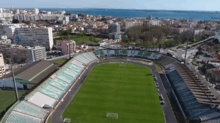
Players
Current squad
- As of 25 June 2020
Note: Flags indicate national team as defined under FIFA eligibility rules. Players may hold more than one non-FIFA nationality.
|
|
Out on loan
Note: Flags indicate national team as defined under FIFA eligibility rules. Players may hold more than one non-FIFA nationality.
|
Notable players













































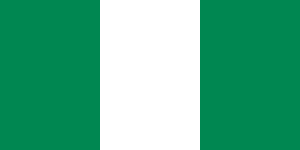
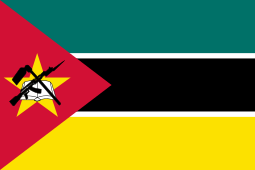
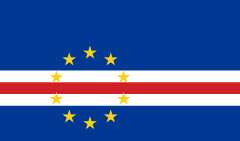

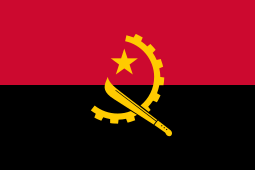


















References
- "Estatutos" (PDF) (in Portuguese). Vitória Futebol Clube. Archived (PDF) from the original on 10 February 2016. Retrieved 16 December 2015.
- https://vfc.pt/clube/historia/
- http://viiiexercito.com/site/index.phpoption=com_content&view=article&id=112:historiavfc&catid=47:vitoria&Itemid=83
- https://www.ogol.com.br/estadio.php?id=13701
- https://www.zerozero.pt/edition.php?id_edicao=21471
- https://www.mun-setubal.pt/historia/
- http://www.viiiexercito.com/
- https://vfc.pt/clube/historia/
- https://www.jacobinmag.com/2019/04/portugal-carnation-revolution-national-liberation-april
- https://www.zerozero.pt/edition.php?id_edicao=549
- https://www.zerozero.pt/edition.php?id=109373
- "Vitória Setúbal FC: Estádio de Bonfim". Soccerway. Global Sports Media. Archived from the original on 31 March 2013. Retrieved 24 April 2013.
- "Vitória Setúbal: Trophies". Soccerway. Perform. Archived from the original on 2 November 2015. Retrieved 2 March 2016.